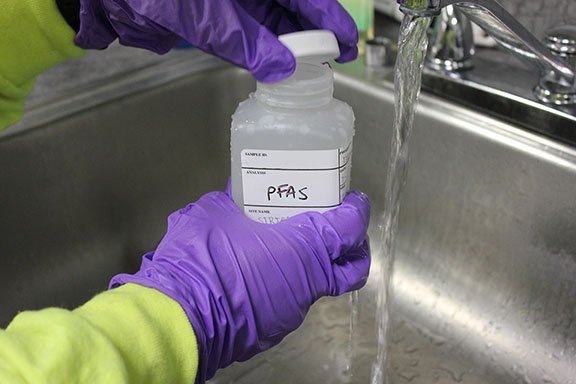PFAS: Per- and Polyfluoroalkyl Substances

In a world of emerging contaminants, PFAS are some of the most prevalent and challenging when it comes to widespread impacts to air, soil, groundwater, surface water, sediment, and residential drinking water supplies. Wilcox & Barton, Inc. is currently the active consultant of record for numerous PFAS projects throughout New England, working directly with cities and towns to clean drinking water through:
- Initial focused site investigations
- Supplemental vicinity investigations
- Remedial action plans and groundwater management permit applications
- Regulatory coordination and communication
- Implementation of town-wide and neighborhood potable well testing, including coordination with property owners and laboratories
Nearly every week, new PFAS research is being distributed and news articles are published showing that PFAS are nearly ubiquitous in the environment, and they have been found in the blood of human and animals worldwide. Due to their use in so many products, our clients are discovering that PFAS are present at elevated concentrations in soil and groundwater at municipal landfills, fire stations, industrial facilities, parks, and neighborhoods where community members live, work, and play.
Given the low detection limits and regulatory standards associated with PFAS (in units of parts per trillion), it is critical that strict sample collection and handling protocols are followed by the field sampling teams to avoid biasing a sample result due to the cross‑contamination from an outside source. The Wilcox & Barton, Inc. field team takes these protocols very seriously, and the company has developed its own Standard Operating Procedure (SOP) based on guidance produced by MassDEP, NHDES and US EPA to ensure that proper sampling procedures and processes are followed.
States throughout New England and the around country are actively proposing and promulgating lower and lower groundwater standards for PFAS. The standards are so low that as investigation programs proceed, increasing numbers of properties with PFAS impacts are likely to have regulated levels of the contaminants. This challenge requires an experienced and knowledgeable team of professionals who understand the sources, science, and protocols required to protect the interests of our valued stakeholders.
